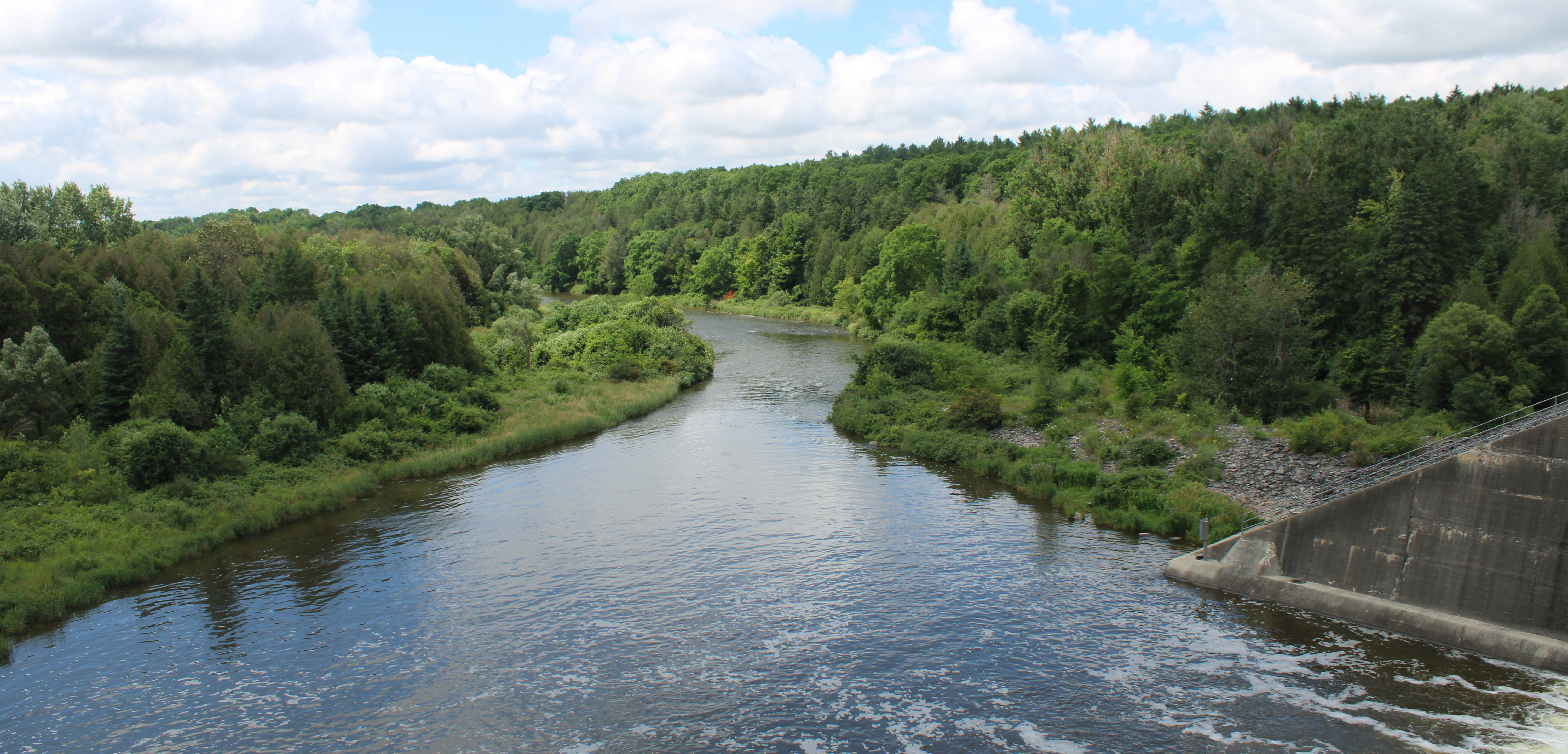Trout Fishing on Ontario’s Grand River
For many Ontario anglers, trout fishing on the Grand River isn’t just a pastime — it’s a tradition. From the cold, clear tailwaters below the Shand Dam to the quiet bends downstream near West Montrose, this section of river offers some of the finest brown trout fishing in southern Ontario. It’s a place where clean water, steady flows, and healthy insect hatches combine to create a trout fishery that rivals anything in Canada.
The Grand River tailwater is unique. Thanks to controlled releases from the Shand Dam, water temperatures stay cool and stable, creating perfect conditions for trout year-round. Stocked browns have flourished here for decades, developing into a self-sustaining population that includes some truly impressive fish. It’s not uncommon to catch 18- to 20-inch trout, and the occasional 24-inch “Grand brown” keeps fly anglers coming back again and again.
Fishing the Grand is all about reading the water. Classic trout lies — seams, eddies, and gravel bars — are abundant. In spring, trout feed aggressively on early mayflies and caddis. Summer brings clear water and technical dry-fly fishing that challenges even experienced anglers. Fall sees the fish bulk up again before winter, chasing streamers and nymphs with renewed aggression.
The variety of water here makes it accessible for everyone. Wading anglers can cover miles of riffles and runs around Fergus and Elora, while fly fishers drift long pools near West Montrose. Light spinning tackle also works beautifully with small spinners, jigs, and soft plastics that imitate natural forage. Conservation efforts and careful management by the GRCA and local clubs have turned this into one of the most respected trout fisheries in the province.
What really defines the Grand, though, is the atmosphere. Early mornings bring mist rising from the water and the delicate sound of rising trout sipping mayflies. Evenings glow gold as the river quiets, with only the ripple of your line breaking the surface. Whether you fish with a handcrafted bamboo rod or a simple ultralight, there’s a sense of peace and timelessness here that keeps people returning season after season.
For those new to trout fishing, the Grand River offers the perfect classroom. You can practice reading current, perfecting casts, and matching the hatch — all within a few hours’ drive of major cities. And for experienced anglers, it offers the kind of consistent, high-quality trout water that’s hard to find without heading north.
The Grand River is more than just a place to catch trout — it’s a place to reconnect with nature, hone your skills, and experience one of Ontario’s most iconic fisheries at its best.
Top Grand River Trout Hotspots
🎯 Fergus to Elora (Tailwater Stretch)
- Species: Brown and rainbow trout
- Best Baits: Nymphs (pheasant tail, hare’s ear), small spinners, worm imitations
- Tips: Fish early mornings or overcast days; stealth and light tippets matter.
🎯 Elora Gorge Conservation Area
- Baits: Dry flies during hatches, small streamers, or floating worms
- Tips: Stay mobile and fish pocket water. Be cautious of slippery rocks and steep terrain.
🎯 West Montrose to Paris
- Baits: Inline spinners, small jerkbaits, egg patterns (spring)
- Tips: Focus on deeper runs and undercut banks. Best fished with light fluorocarbon leaders.
🎯 Conestogo River (Tributary)
- Baits: Nymph rigs, micro-jigs, small crankbaits
- Tips: Fish slow and deep; excellent winter and early-spring option.
Best Times to Fish for Trout
- March–May: Rainbows run and hatches start — nymphing and small streamers work well.
- June–August: Brown trout feed early and late; dry flies and terrestrials excel.
- September–November: Browns spawn; use streamers and egg patterns responsibly.
Where to Buy Bait & Tackle
- Natural Sports (Kitchener) — top fly selection and trout gear.
- Riverside Bait & Tackle (Brantford) — general bait and terminal tackle.
- Tight Lines Fly Fishing (Waterloo) — specialized trout fly shop with local expertise.
Trout Fishing Tips for the Grand River
- Approach quietly — trout spook easily in clear water.
- Match the hatch — small, natural patterns are key.
- Use fluorocarbon leaders (4–6 lb) for stealth and sensitivity.
- Drift your presentation naturally; avoid drag on your line.
- Always check flow rates below Shand Dam before fishing.
Final Word
The Grand River offers some of Ontario’s finest trout fishing — especially for brown trout. With clear tailwaters, incredible insect life, and well-managed conservation efforts, this river is a must-fish for any angler. Whether you’re swinging streamers in the Elora Gorge or drifting nymphs below Shand Dam, the Grand rewards patience and precision.


















